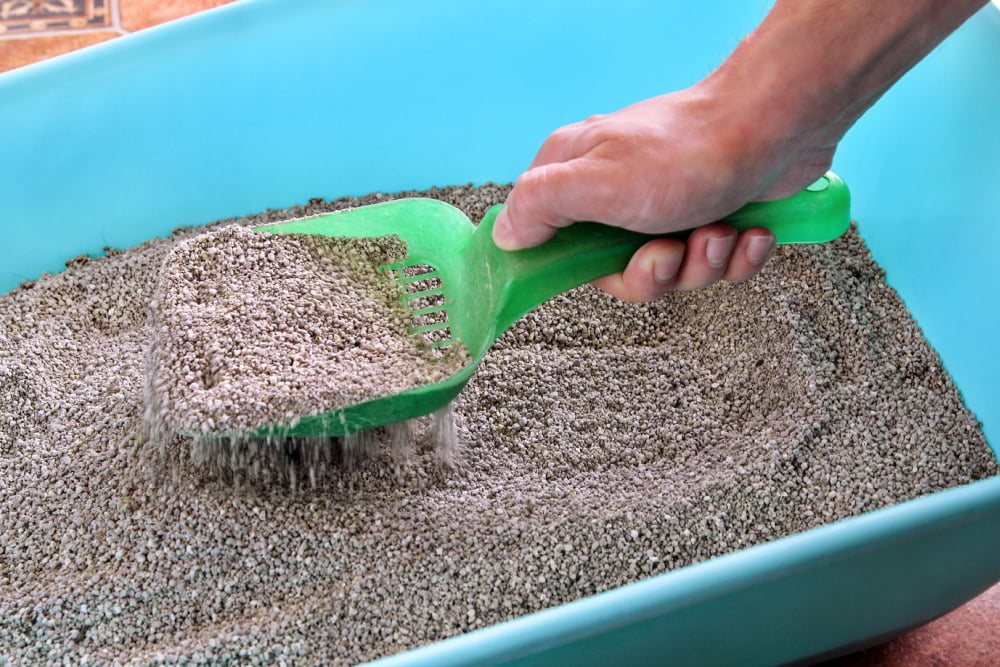10 ways to make cats use litter boxes

Adjusting a cat to its litter box can initially be a hassle for cat parents. While some cats become used to their litter boxes quickly and spend a lot of time in them, others may refuse to use these boxes, spoiling one’s carpets, floors, and other surfaces. However, strategically introducing litter boxes to cats can help them adjust quickly. So, here are some ways to introduce litter boxes to cats:
Put it in the right location
Cats are reserved creatures; they need their space and privacy. So, they may never get comfortable with it in a noisy room. That is why a quiet, isolated space with no interruptions is the right place to keep a litter box. Also, cats do not like defecating where they eat, so the litter box should be kept away from their dining areas.
Encouragement techniques
Rewards are great ways to train all animals, including cats. They will likely continue a habit when their owners praise or reward them. So, giving cats a treat or praising them when they use their litter box can help establish the habit properly.
Choose a box depending on the cat’s height
Choosing a litter box that is at least one and a half times the height of one’s cat is recommended. Doing so ensures that the cat can comfortably fit into the box and does not hesitate to use it when needed. One can promote good litter box habits and maintain a clean and healthy home environment by providing a suitable litter box.
Try different types of litter
Sometimes, cats may not like certain fragrances or textures. So, they may not enter litter boxes if they dislike how it smells or feels. Cat parents can only get this right with trial and error – they can try filling up the litter box with one type of litter and find out if the cat prefers it. If not, they should change the litter and try again until they find the type of litter the cat is comfortable with.
Place the cat in its litter box
This strategy is sure to be effective with time, because it helps cultivate the habit among cats to use their litter boxes. Cat parents should drop their feline friends into litter boxes immediately after meals because most cats may need to defecate. If the cat poops outside its box, one should pick up the cat and place it into the litter box at once. This way, cats associate urinating and defecating with using the litter box.
Avoid punishments
Rewards are always welcome for cats, but punishments may increase their sense of fear, which may cause them to reject the litter box further. When it comes to potty training, the best way is to be patient and avoid punishments or scolding. After all, it is not an inborn habit for anyone, so it is natural for cats to take a while to get accustomed to it.
Maintain the litter box well
Cats are known for their cleanliness, so they will most likely avoid dirty litter boxes. Pet owners must make cleaning the litter box a daily routine by removing waste and soiled litter. Additionally, the litter box should be emptied and cleaned at least once a week. One effective way to clean the litter box is to soak it in hot water and unscented dish soap for a few minutes. After that, the box should be drained, washed, and refilled with fresh litter.
Avoid changing the type of litter suddenly
Cats are often picky about their litter preferences, so suddenly changing the type of litter can be distressing for them. If someone wants to change the type of litter, they should do it slowly. One strategy is to buy a new litter box, fill it with the new type of litter, and place it near the old litter box. If the cat ventures into the new box, it likes the new type of litter. If the cat does not prefer a type of litter, it is best to let it go.
Stuff enough litter in the box
Cats usually like to cover up the mess after using the litter box. So, they need enough litter to cover it up nicely. Cat parents should place at least two inches of litter inside the box so that the cat accepts the box for its lack of litter.
Consult a vet if the cat still does not use the litter box
Finally, if a cat refuses to use its litter box even after one has tried out all possible strategies, it is time to consult a vet. Urinating outside the litter box is not just a mess for cat parents; it can also be a health concern if there is no specific reason for the cat to reject the box. In such cases, a vet can identify possible health conditions and suggest proper ideas.
Teaching a cat to use a litter box may require considerable effort at the outset, but the results are worth it. Once trained, a cat that uses its potty properly will not create any mess around the house, which can significantly reduce the stress and effort required by cat owners in the long run.



